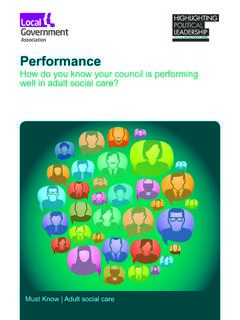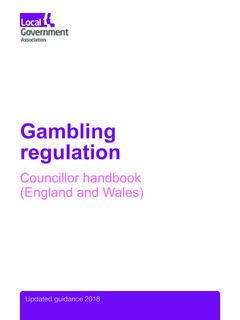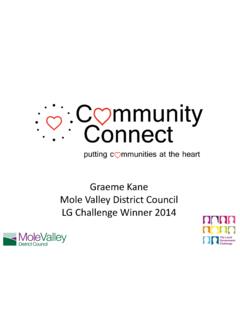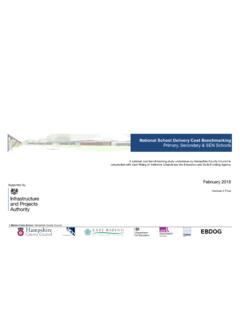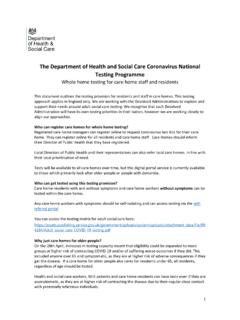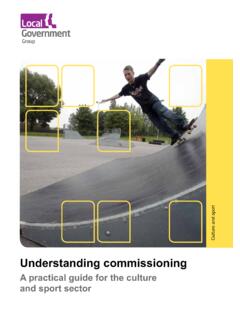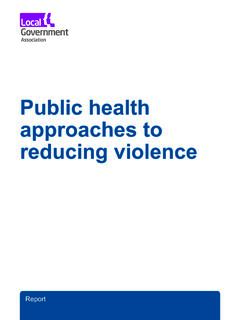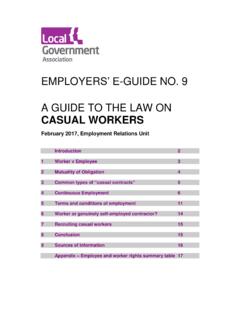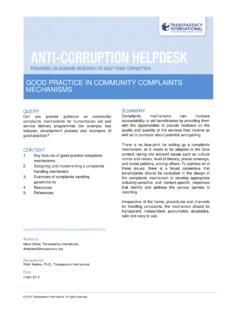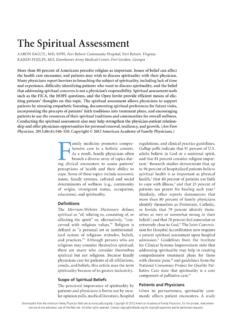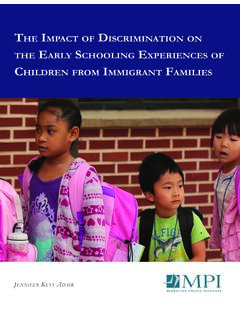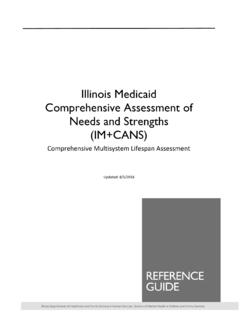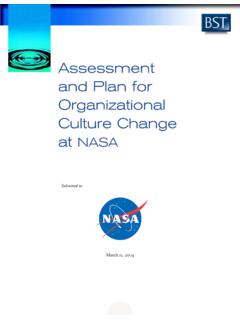Transcription of Practical examples of Making Safeguarding Personal from ...
1 Practical examples of Making Safeguarding Personal from commissioners and providers of health and social care We are doing this well.. Making Safeguarding Personal Acknowledgements Author: Michael Preston-Shoot (on behalf of LGA/ADASS). Presentations at workshops which formed a basis for this briefing can be found with other Acknowledgements Making Safeguarding Personal resources at Michael Preston-Shoot and Authors: Jane Lawson (on behalf of LGA/ADASS). Safeguarding - Personal Contents Introduction 4. Applying learning 5. Engaging with the person and their families 8. Workforce development and support 10. Developing values-based leadership and culture 11. Commissioners and providers working together 12. Concluding thoughts 13. 4 Practical examples OF Making Safeguarding Personal . Introduction From a sequence of workshops a briefing was published1 that identified the hallmarks of best practice for commissioners and providers of health and social care committed to Making Safeguarding Personal .
2 The briefing also provided suggestions on what needs to happen to embed Making Safeguarding Personal in this field of practice. A follow-up workshop, attended by commissioners and providers of health and social care, and independent chairs and business managers of Safeguarding Adults Boards, was convened to share Practical examples that were turning fine words into positive practice. Short presentations2 offered such examples to which were added contributions from workshop participants. This briefing alongside those presentations draws together and shares this learning as a contribution to sector-led improvement. 1 Preston-Shoot, M. and Lawson, J. (2019) Making Safeguarding Personal for Commissioners and Providers of Health and Social Care: We can do this well. London: LGA and ADASS. 2 5. Applying learning Both aforementioned briefings build on earlier This briefing offers examples of positive practice work3 that merged the five key questions asked by across four domains, namely how commissioners the Care Quality Commission (CQC) with existing and providers engage with individuals and their knowledge and understanding that can inform and families, support and develop their staff, promote support Making Safeguarding Personal for providers and embed values-based leadership and culture, and commissioners.
3 The five CQC questions, and work together. It is possible to map what namely are services well-led, caring, effective, safe good' looks like in these four domains when and responsive, were populated with examples asking the five questions. The template below is of positive practice from outstanding' providers, for completion service by service. alongside hallmarks of what commissioners would look for and how an organisation can demonstrate that its culture supports personalised approaches to Safeguarding . Well-led? Caring? Effective? Safe? Responsive? Engaging with the person and their family Workforce development and support Developing values-based leadership and culture Commissioners and providers work in partnership An example of what this means in practice, focusing on learning from outstanding' providers, was shared at the workshop to set the Well-led? There is an open and inclusive atmosphere at the service. Staff enjoy and feel proud working `. at the service and there is a great team spirit.
4 Caring? People, relatives and staff build great relationships with each other; staff and people feel supported and safe to raise concerns. Effective? Staff receive support and supervision which allows expression of concerns; staff notice changes in health needs of individuals so that timely action is taken. Safe? Service uses innovative and imaginative ways to manage risk and keep people safe while Making sure they have a full and meaningful life. Responsive? People and their relatives know how to raise concerns. Complaints and concerns are dealt with quickly and resolutions are recorded along with actions taken. 3 Lawson, J. (2017) Making Safeguarding Personal : What might good' look like for health and social care commissioners and providers? London: LGA and ADASS. 4 Jane Lawson's presentation at the workshop. 6 Practical examples OF Making Safeguarding Personal . Safeguarding Adult Reviews (SARs) offer windows into situations where there were shortcomings in relation to the four domains and/or the five questions.
5 SARs are human stories, first and foremost5. Sight should not be lost of the importance of dignity, respect, human rights, equality, relationships, care standards and wellbeing. SARs, however, can be powerful tools for learning from shortcomings by building an evidence-base about positive practice. That knowledge can be used to answer the following key questions: Where are we What actions What is the What are now and how are necessary How will we evidence-base we trying to might we reach and by whom promote and for what good achieve? where we need to achieve and evaluate change? looks like? to be? sustain change? It is also possible to consider how the six adult Safeguarding principles might be rendered meaningful by commissioners and providers of health and social care. Some initial ideas appear in the table below. Empowerment Focus on things important to the person. Service users are enabled to raise issues and, when doing so, these occasions are seen as openings and opportunities to get things right.
6 Every voice should be heard; every contact should count. Prevention Services are responsive to emerging concerns, addressing issues early in a personalised way. Protection Find out what outcomes individuals want, what matters to them, and share concerns to arrive, wherever possible, at an agreed way forward. Proportionality Any restriction on what a person is able to do should be in their best interests and just as much as is necessary to keep them safe and promote their wellbeing. Partnership The ethos is one of working together to find Practical solutions, to make Safeguarding Personal , and to ensure resources are sufficient to promote people's wellbeing. There is parity of esteem and co-production. Accountability Openness, transparency and candour characterise the response to critical incidents. 5 Jane Lawson's presentation at the workshop. 7. Workshop participants were asked for feedback on what they considered to be the hallmarks of best practice and how these could be embedded to promote positive outcomes for people.
7 Their contributions are summarised here and could be seen as standards for benchmarking. Engaging with the Dignity, caring and compassion should be the hallmarks. person and their family Create a safe environment. Understanding and respecting the values of the person and their belief system. Person-centred care and support planning and provision. Recognising that little things are important. Build on people's strengths and what they can do positive not deficit-based practice. Recognise and respond to what matters to them. Listen to family and friends also. Give people with lived experience the opportunity to give voice to their hopes, dreams, wishes, aspirations, fears and desired outcomes co-production in action. Workforce development Empowering front-line staff to demonstrate leadership and make decisions. and support Recruitment that has a focus on values and beliefs as well as knowledge and skills. Good supervision and debriefing, especially in situations of uncertainty. Ensure that staff know what good looks like.
8 Promoting self-awareness, for example about attitudes towards risk. Developing values- Embedding Safeguarding in daily practice so that it is not seen as something based leadership and separate (so not punitive) learning not blame. culture Open culture and collaborative working. Transparency, less defensiveness, shared learning and duty of candour. Accountable leadership everyone. Commissioners and Having a good understanding of expectations and responsibilities joint ownership providers work in and partnership. partnership Promote relationship-building between placement commissioners, providers, and social workers and care coordinators working with individual patients/service users valuing each other. Ensure resources are sufficient to meet a person's care and support needs, for example before hospital discharge and placement. 8 Practical examples OF Making Safeguarding Personal . Engaging with the person and their families Practical examples of positive practice with That partnership extends to family members and individuals receiving care and support were friends.
9 They form part of the team around the reminiscent of life-story work and genograms that person7. Commissioners and providers have much social workers sometimes use with children and to learn from their observations, about searching young people, especially those who are placed for placements and their experiences of the with foster carers or for adoption. The examples care and support being offered. The quality of included6 capturing what my good day looks like , the information provided by commissioners and a life journey book, a life story and a collection providers is also important in facilitating family and of treasured memories. Once again, this work is friends to make informed decisions about which about human stories, talking about life and loves, services to access and how to raise concerns and exploring people's strengths and attitudes when this is necessary. towards risk as central to promoting wellbeing. This approach focuses on establishing a genuine There are barriers to be overcome if Making connection, and identifying what outcomes are Safeguarding Personal is to be achievable in important to the person.
10 A resulting care plan is the provision of health and social care. They thereby co-produced. include fear of taking risks, lack of resources from commissioners and support from primary care, Workshop participants offered other examples and perceived inconsistency in CQC inspections. through which to achieve positive practice for However, there are enablers also, not least individuals and their families. The examples organisational vision, a consistent and dedicated included resident and family meetings, coffee staff team, high morale and adequate staffing mornings, forum discussions with commissioners and advanced care planning. Alongside and just as important as the examples were the underpinning values that were seen as axiomatic of best practice. Offering a genuine partnership rather than care and support being based on them and us , foregrounding the human and compassionate side of caring, and encouraging feedback at every opportunity. 6 Maggie Bennett's presentation at the workshop.
